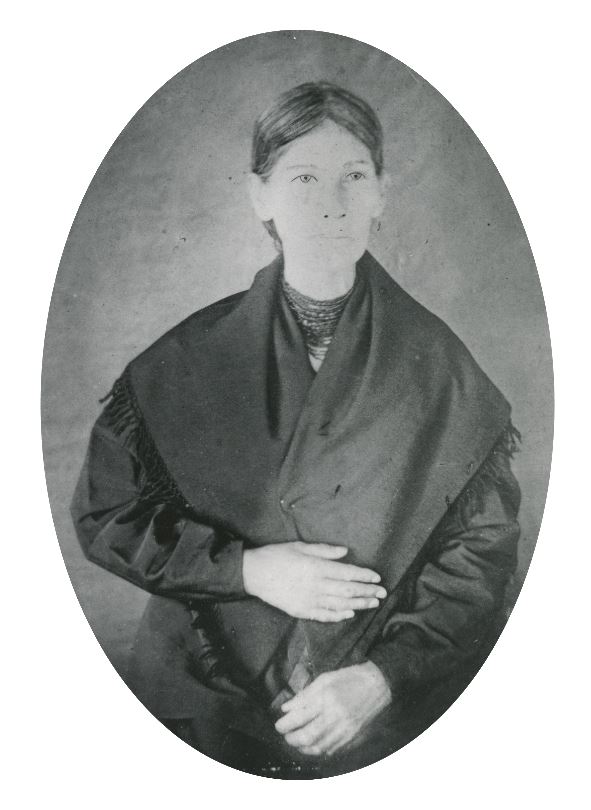Legend has it that after 8-year-old Mary Biddle fell through the ice off Mackinac Island and died back in December 1833, her father came up with the idea to mark a safe pathway to the mainland with Christmas trees. The practice continues to this day, guiding snowmobilers over an unofficial ice bridge between the island and St. Ignace in Michigan’s Upper Peninsula.
There’s no truth to that legend, but there’s no doubt the Biddle family has played an important role in Mackinac Island history, nonetheless. For one, little Mary’s grave is the oldest known burial site in Mackinac Island’s Ste. Anne’s Cemetery, where many of the island’s prominent residents have been laid to rest. For another, Mackinac Island’s historic Biddle House, which the family occupied starting in the 1820s, is the best surviving example of a middle-class residence at the height of Mackinac Island’s fur trading era.
A lesser known, yet no less significant bit of Biddle family history is that Agatha Biddle, Mary’s mother, was a leading example of Métis women who played instrumental roles in Mackinac Island’s economy and culture during the 19th century. That aspect of family history is also celebrated at the Biddle House, which features the Mackinac Island Native American Museum.
More About the Biddle family of Mackinac Island
Edward Biddle was part of a prominent family in Philadelphia. For example, his cousin, Nicholas, was president of the Second Bank of the United States and editor of Lewis & Clark’s report on their journey to the Pacific Northwest. Edward made a name for himself after finding his way to Mackinac Island following the War of 1812. He worked in the booming Great Lakes fur trade for many years and later served both as sheriff and Mackinac Island village president.
But it’s his wife whose story is really interesting. Agatha Biddle was part of the Métis people with both French and Native American heritage. That background gave Agatha the ability to bridge both cultures, becoming a prominent woman on Mackinac Island in a society otherwise dominated by males.
Agatha wore the traditional clothing of her tribe and often welcomed Native American guests into her home, while also partnering with her English husband in their business. In her “Reminiscences of Early Days of Mackinac Island,” author Elizabeth Therese Baird, herself of both European and Native American heritage, wrote that Agatha Biddle “was fair-complexioned for an Indian, although her eyes were very black, and her hair equally so and of the thickest and longest.”
Mackinac Island’s Biddle House
Mackinac Island’s Biddle House tells the story of Native Americans in northern Michigan through the lens of Agatha Biddle. In addition to exhibit galleries inside the house, there’s an interpretive trail outside that emphasizes the relationship of Native American culture to Mackinac Island. There also are live exhibits with costumed interpreters demonstrating home life in the 1830s and talking about the artifacts on display.
Mackinac State Historic Parks created the Biddle House Mackinac Island Native American Museum along with tribal partners to share the story of the Native American peoples of northern Michigan. The museum notes that it is a story of battles won and lost, promises made and broken, cultures repressed and resurgent – and it is a story that continues today.
RELATED MACKINAC ISLAND BLOGS:





